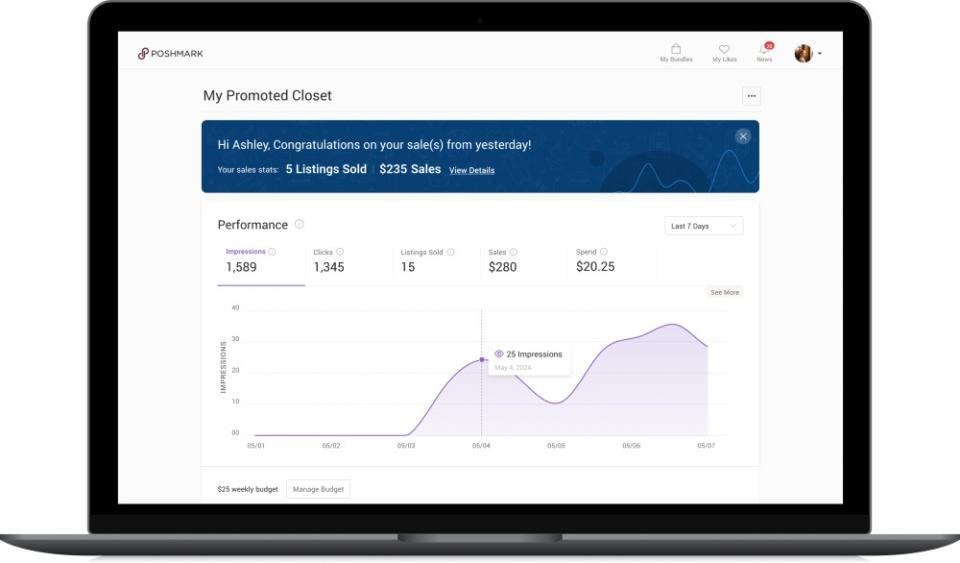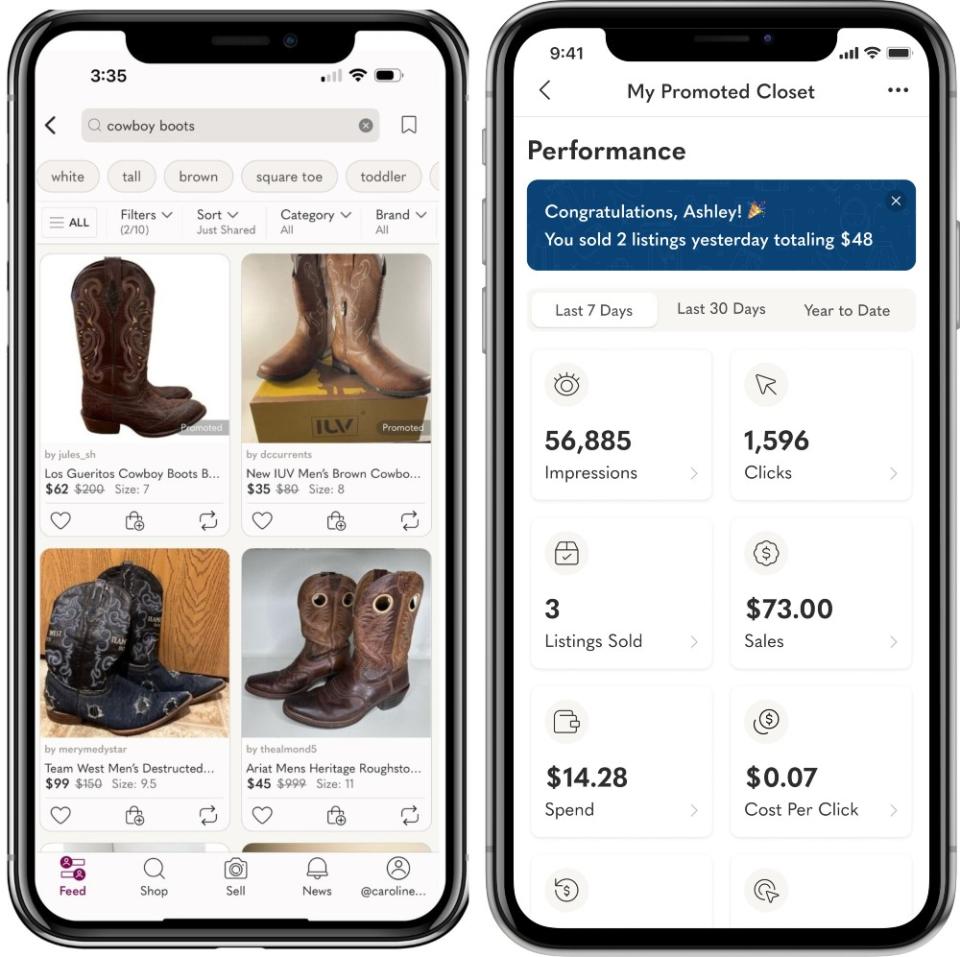Poshmark’s New Machine Learning Tool Helps Sellers Promote Their Listings

Poshmark seller Dina Sudduth has seen her sales shoot up over the past ten months.
Her profile on the platform, @classysapphire, has over 25,000 active listings and more than 270,000 followers. But her new business secret lies not in the products themselves, but in the marketing behind them.
More from Sourcing Journal
Since last year, Sudduth has been helping to beta test Poshmark’s newly announced machine learning tool, Promoted Closet. The resale platform officially announced the tool, which helps sellers more easily grab consumers’ attention—and wallets—on Thursday.
With Promoted Closet, sellers can set a weekly marketing budget for the items in their closet. In turn, Poshmark uses machine learning to boost the ranking of sellers’ listings in the search results presented to consumers.
And, for Sudduth, less than a year’s worth of results have already convinced her of the tool’s value.
“I’m always looking to try new things to increase my listings’ visibility and get ahead of the competition. I started with the Promoted Closet free trial in July of last year and haven’t stopped using it since,” Sudduth told Sourcing Journal. “It’s helped me sell my older inventory more easily and free up closet space for new listings. Since leveraging the feature less than a year ago, I’ve made $50,000 in sales from Promoted Closet alone, while also seeing overall engagement with my closet increase.”

Sudduth’s sudden growth appears to be consistent with what other sellers who have begun using the tool have experienced. According to Poshmark, sellers who beta tested Promoted Closet have benefitted from a 43-percent increase in sales and an 80-percent increase in product page views, on average.
If multiple sellers are promoting items that would appear in the results of the same search, the system uses a number of different factors to rank the relevancy of products for specific consumers, Manish Chandra, the company’s CEO and founder, said.
“The machine learning algorithm will rank [the listings] based on their chance to convert into a sale. The algorithm will take into account various attributes of each listing including, but not limited to: price, recency of listing, popularity of the brand, listing description, etc., to populate the most relevant result for the shopper,” he explained.

Chandra said Poshmark is still gathering data on average spend as it expands access to the product. However, he estimated that many spend between $10 and $30 per week to use it, with some of the heavy hitters spending “significantly more.”
Promoted Closet, which took over a year to develop, is not Poshmark’s first foray into artificial intelligence and machine learning, but it does represent an inflection point in the company’s AI strategy for sellers.
Last year, the marketplace launched Posh Lens, which allows users to search for products by capturing or uploading an image of a similar style. While that may make sellers’ listings easier to find, that tool has been targeted more toward consumers looking to purchase items on Poshmark.
Chandra said because Poshmark sellers range from casual sellers looking to turn over excess from their personal wardrobes to sellers with hundreds, or even thousands, of items using the marketplace as a main source of revenue, building tools that benefit sellers of all kinds can prove difficult.
By and large, though, he feels Promoted Closet comprehensively meets the needs of a broad array of sellers, since it simultaneously takes into account every listing a seller offers—whether that’s one or 100.
“What is exciting about this product, and very distinct from the industry, is our focus on not promoting an individual listing, but [instead] giving the system the ability to promote [a seller’s] entire closet, which makes it very simple for a small seller to participate in this platform, and certainly, for a large seller to participate.”
Poshmark expects that, among its larger sellers, it could see adoption rates of up to 80 percent within a few years, according to Chandra. Smaller-scale sellers, he anticipates, may have a lower adoption rate.
Chandra said that while some sellers already use generative AI of their own accord to create better product photos or develop product listings, Poshmark will soon further leverage AI to make the listing processes simpler.
“We’ve been working on an auto-listing feature using generative AI to help our sellers go from concept to a fully-baked listing,” Chandra said. “We see generative AI affecting all aspects of the seller—from listing creation, to listing marketing, to customer engagement, to how we support them.”
“You’ll see over the course of the next 12-18 months—or sooner—a lot of different [AI-powered] offerings that we’ll be putting in,” he added.

